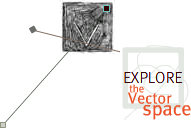
As we finalized preparations for publication of this installment of Vectors, the relevance of the issue's theme - mobility - was cast into surreal relief by the events leading up to and following Hurricane Katrina. The disaster along the Gulf Coast painfully underscored the stakes of and access to mobility in the United States circa 2005. The dead in the city of New Orleans were those unable to leave, primarily those without the financial or physical resources to evacuate in advance of the hurricane. They were disproportionately African American, poor, elderly, ill, neglected. They were, in a word, immobile, trapped in the raging waters that consumed the historic city, left behind to die.
Understanding the role of technology in the chaos of Katrina is complex. Within days, countless websites sprang up to help track those who had escaped and to organize relief efforts. Hackers quickly produced new mash-ups of Google Maps, outlining the damaged areas and allowing concerned friends and family members to pinpoint affected neighborhoods. These bottom-up technological efforts provided valuable services and some comfort in the wake of the disaster, particularly given the slow response of the federal government. But the limits of technology were plainly revealed as well. Computer simulations and government reports had predicted the scope of damage years earlier. Yet virtually nothing had been done to reinforce the levees despite repeated requests from officials in Louisiana. Processed, parsed, and analyzed data cannot produce change in a country that has abandoned its domestic infrastructure, neglected the poor, and failed to realize the hopes and possibilities of the Civil Rights era (not to mention the Emancipation era.) Never mind that Black bodies and Black labor once built New Orleans.
Each of the projects in this second issue of Vectors in some way serves to remind us of the social and cultural imbrications of technologically-mediated mobility. If the telecommunications and entertainment industries (and countless consumers) are now enthralled with all things mobile, the pieces collected here underscore that mobility is first and foremost a social phenomenon, one with long and troubled histories. From the i-Pod to the cell phone, smaller, faster, more tote-able technologies are everywhere touted as the next wave and celebrated as if they are somehow inherently liberating. This issue explores the possibilities of mobile technologies (and mobile scholarship) while also illustrating that mobility is not equally available to everyone nor inherently a good thing. To the over half million Americans displaced by Katrina (the largest national displacement in U.S. history), being mobile no doubt feels bittersweet.


 Mobility Issue Projects
Mobility Issue Projects
